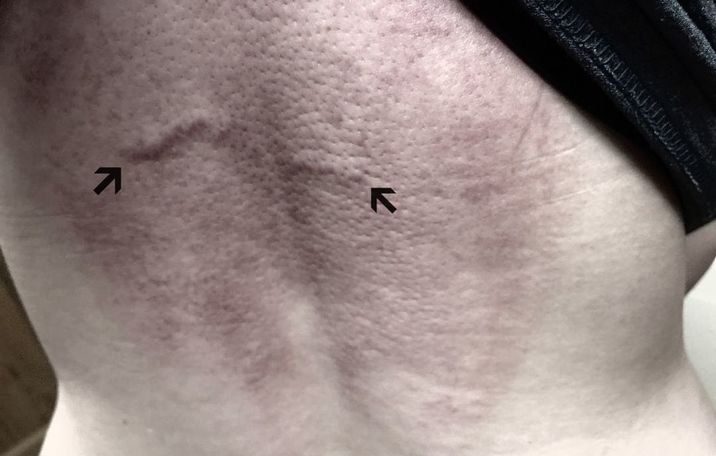TEARS IN FASCIA AND FASCIAL ADHESIONS: WHAT DO THEY LOOK LIKE?

If you’ve followed my site for any length of time you are already aware that I’m the FASCIAL ADHESION guy — the microscopic tears in fascia. Although there are ANY NUMBER OF WAYS that fascia can tear and subsequently adhese, a somewhat less common one is via impact. The thing is, impacts have the potential to cause some fairly hellacious adhesions and pain, frequently being deep and visible (HERE). In many cases, however, they are only visible after the area has been intensely worked up.
I’m so proud of what the young lady in the picture above has done with her life, but since she’s always been uncomfortable about getting in front of the camera to do a VIDEO TESTIMONIAL, I’ll talk about her case in terms that will not identify her. About six years ago she was hit in the back by an extremely heavy (steel) object that was accidentally knocked over on her.
After a year of doctors visits, trips to various kinds of specialists, lots of diagnostic imaging, and therapy (nothing she did helped and no one could ever tell her what was wrong even though she could pin point her pain) she eventually made her way to my clinic.
The first thing I did was check ranges of motion (they were very restricted and painful) and then check her for FASCIAL ADHESIONS. While she was fairly loaded with small tears, the thing that I remember most was the big tear that you can see above (again, completely invisible until I work on her). This scar looks similar to the STRETCH MARK SCARS I’ve discussed in the past (once brought to the surface, it sticks out about 1/8th inch) but it’s different.
After her first treatment the pain was immediately relieved for the first time since the accident. And while TISSUE REMODELING has addressed the functional (dysfunctional) aspect of the scar, the scar itself remains. The result is that she needs the area worked over about once a year.
